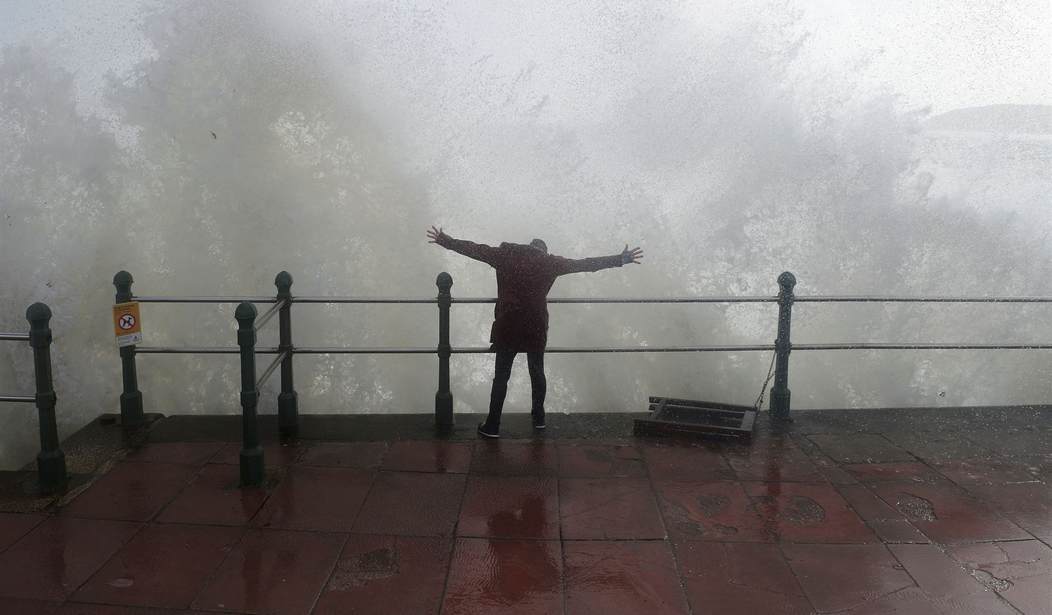With the recent flooding we’ve seen on the Gulf Coast and elsewhere, coastal cities have been reevaluating their strategy to deal with hurricanes and their aftermath. Boston is one city where floods have struck in the past and it remains susceptible to serious flood damage under the wrong conditions. Hurricanes rarely make landfall that far north on the east coast, but it does happen at times. With that in mind, the city established a commission called the Boston Harbor Regional Storm Surge Working Group to study the problem. One member of the group recently stepped forward with a preliminary proposal that might work, but it could also be a hard sell to the people of the state. They aren’t thinking in small terms. What they’re proposing is a 175-mile long sea wall stretching all across Boston Harbor and the coastal areas to the north and south of it. They aren’t even putting a price tag on it yet, but it’s going to be huge. Their argument is that over the long run, the cost of doing nothing will be higher. (CBS Boston)
Former Massachusetts State Senator Bill Golden believes the waterfront is one of Boston’s biggest threats.
“We have been given a warning, and we’re playing Russian roulette with nature,” he told WBZ-TV. “The impacts of storm surge and sea level rise are real. They are here today and we have to address them.”
A multi-layered and united defense is needed to preserve Boston and the surrounding 14 communities on the harbor.
Golden is part of the Boston Harbor Regional Storm Surge Working Group, an organization committed to developing the protection.
The first question that may come to mind is how they could build a wall blocking off the entire harbor. After all, Boston is a harbor city. It relies on ocean traffic for both commerce and recreation for tourism. You can’t just block it off, right? That’s why Bill Golden’s plan includes a series of massive sea gates that would allow maritime traffic through but could be sealed off in the event that a storm approaches.
The gates will drive the cost of the project up even more, but they simply can’t be avoided. To reduce costs, the bulk of the major sections requiring gates would be “gray,” meaning they would be made of concrete. But other sections would be “green.” Those would be earthen levees similar to many portions of the system in place in New Orleans. They could be planted with grass and other greenery to hold the soil in place and would require less maintenance.
While no estimate is being given for this design, we do have at least some indication of what the price tag might be from previous debates on the same topic. In 2018, the University of Massachusetts-Boston Sustainable Solutions Lab was commissioned to conduct a study of the efficacy and cost of a sea wall for Boston Harbor. They were only looking at a plan that involved a 3.8-mile wall that covered the outer harbor and a smaller section protecting the inner harbor.
The results were not promising. That plan had an estimated cost of $11.8 billion dollars and it couldn’t be finished before the year 2050. Making matters worse, they believed that the wall would only have a lifespan of 50 to 80 years of being pounded by the ocean before it would need to be completely refurbished if not replaced in some sections.
And that’s for a wall that’s not even 12 miles long. The new plan is talking about 175 miles of wall, or more than 14 times the length. And the number of gates they are envisioning would drive up the cost even further.
I find myself left to wonder why this ambitious plan to wall off an entire harbor of that size needs to be considered when they could more easily and affordably follow the example of New Orleans. Rather than gigantic concrete walls out in the ocean, couldn’t they construct levees along the shoreline up and down the coast. Most of that could be “green,” perhaps with a concrete foundation at the base to build on and hold its shape. I understand that nobody who lives near the ocean wants their view blocked by a huge hill, but that’s still got to be better than watching the Atlantic Ocean pouring into your living room, right?
The other, even less popular alternative is one that I’ve proposed for New Orleans in the past. If your city is that prone to flooding, perhaps it’s time to start relocating all of the residents and businesses further away from the coast. The construction boom would create a lot of jobs and the insurance costs would be reduced if you moved out of the flood plain. Spread out over time, the price tag might even be more manageable than that of a gigantic sea wall. Or, if you don’t like either of those options, you can just keep rebuilding the city every time a major storm strikes. It’s your choice.








Join the conversation as a VIP Member